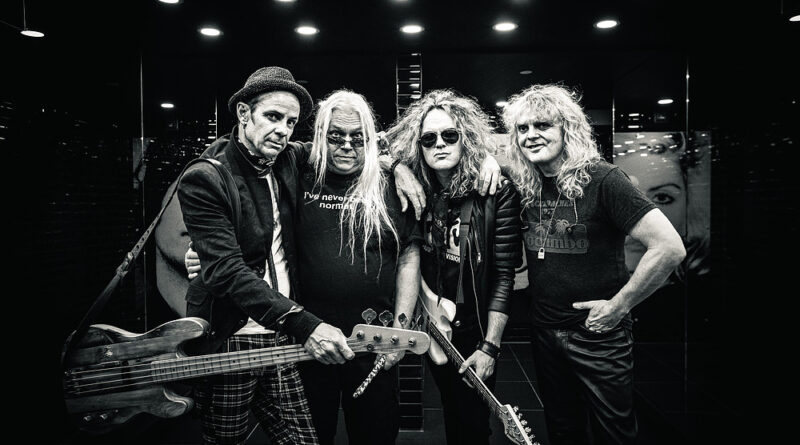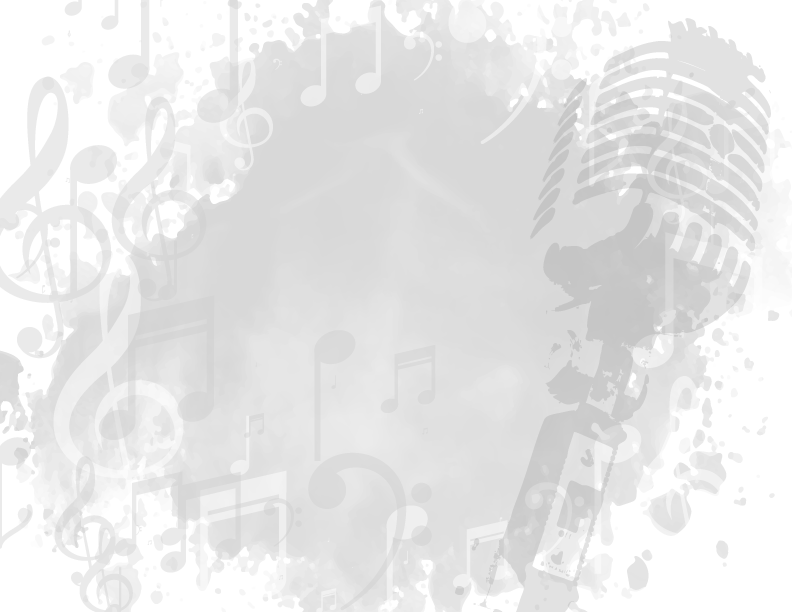Long Time Coming: A Conversation With Andy Curran of Coney Hatch
It was a long time coming, but almost 40 years on, Canadian hard rockers Coney Hatch have released their first-ever live record, “Live At the El Mocambo” featuring songs from the quartet’s self-titled 1982 debut, along with selections from follow-up releases “Outa Hand,” “Friction,” and “Four.”
The Toronto-based band, who released their self-titled debut in 1982, followed by “Outa Hand” (1983), “Friction” (1985) before breaking up then reuniting in 2010 and eventually recording the aptly titled “Four” in 2013.
Ironially, lead vocalist and guitarist Carl Dixon, vocalist and bassist Andy Curran, guitarist Sean Kelly and drummer Dave Ketchum were on track to release a different live album when they received what would be a course-changing phone call one afternoon.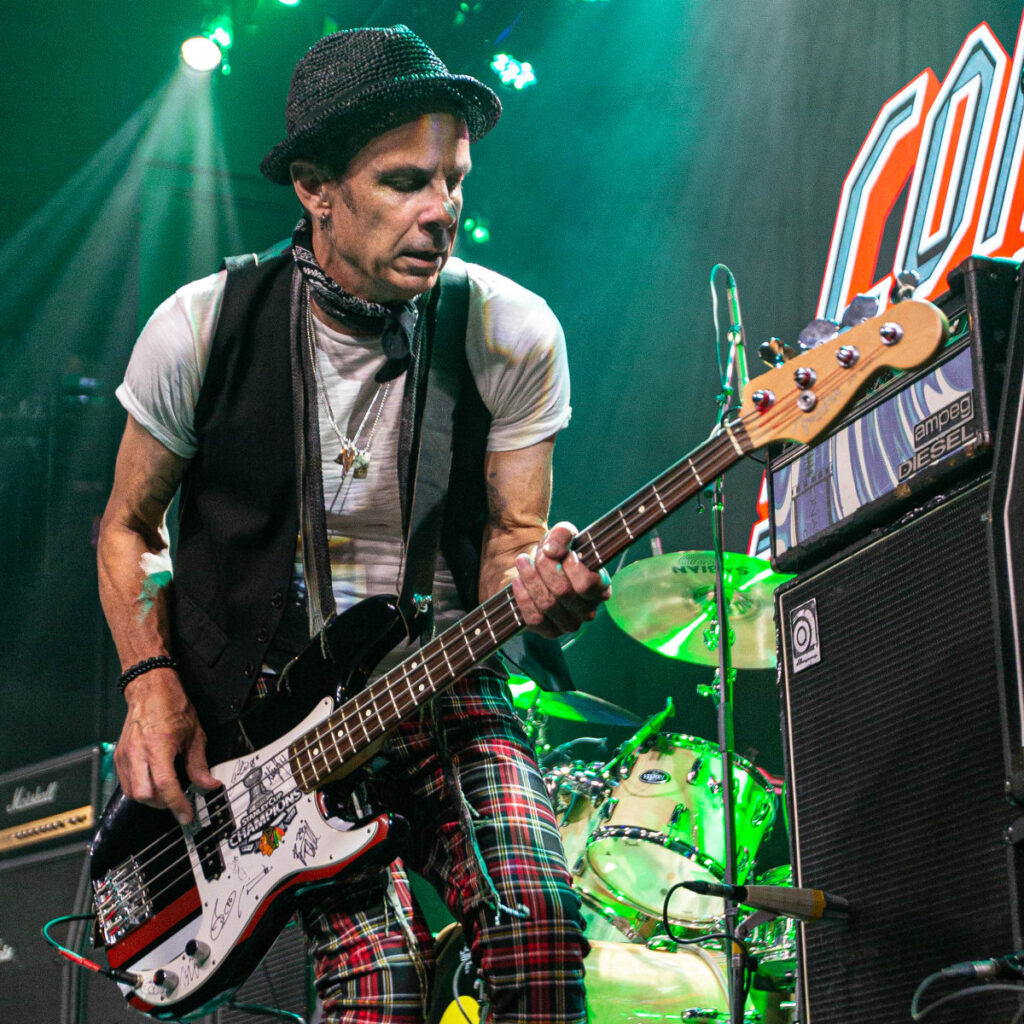
“We played and recorded a show in Germany a couple of years ago under the premise that we would bring it back home, mix it, and release it as ‘Live In Germany,’ said Curran in a phone interview with ListenIowa. “Out of the blue, we got a call from the guy who bought the El Mocambo, which is probably the most iconic venue in Toronto, asking if we would play there. We struck a deal, and once that happened, it put the German show on the back burner.”
The result is the blistering “Live At The El Mocambo,” a 15-song set captured during the band’s live stream show on Oct. 3, 2020, packaged in a hand-stamped, white, bootleg style album jacket available independently now through the bands official webstore at https://rockpapermerch.com/collections/coney-hatch as well as Isotope distribution https://www.isotopemusic.com/contact.html.
The release is not the only exciting thing Curran has been involved in as of late. Rush guitarist Alex Lifeson recently revealed he has nearly completed work on a new album with Curran, and that the pair aim to release a 10-track effort in the summer or early fall of this year. The project will be called Envy of None and also feature singer/songwriter Maiah Wynne.
“Andy approached me about four years ago, shortly after the last Rush tour, about adding some guitar on some of the things he was doing,” Lifeson told Guitar World recently. “I did that. A few months later, he sent another one, and did that. Then we started getting more serious, and then we found a great singer, Maiah Wynne. So we’ve basically done an album’s worth of material that we hope to release sometime soon. I’m really excited about that.”
ListenIowa sat down with Curran to talk about the new Coney Hatch release, how Carl Dixon’s auto accident led to the band getting back together, and what it was like being a teenager in a band thrust into opening for the likes of Iron Maiden and Judas Priest.
Tell me about the inspiration for the bootleg-style artwork for “Live At the El Mocambo.”
I saw The Cars play there, and they did a bootleg of the show that you could buy at record stores. It was literally a white cover with a rubber stamp, and had a little insert with the setlist. It wasn’t released by their label, so it was a bootleg. So we took a page out of that book and took that sort of approach, too. We pressed up 300 copies of it, 100 of them available from our website, signed and numbered. We started to get some interest from some local record stores, so the other 200 went out to retail locations. We’ve now shipped some to the U.K. and the States, so it’s growing. People are hearing about it. It’s exciting to see. I never thought all these years later that people would still be interested in our music, but I guess there is!
Was getting back together and playing like jumping back on a bicycle, or did it take some time to get everyone up to playing speed?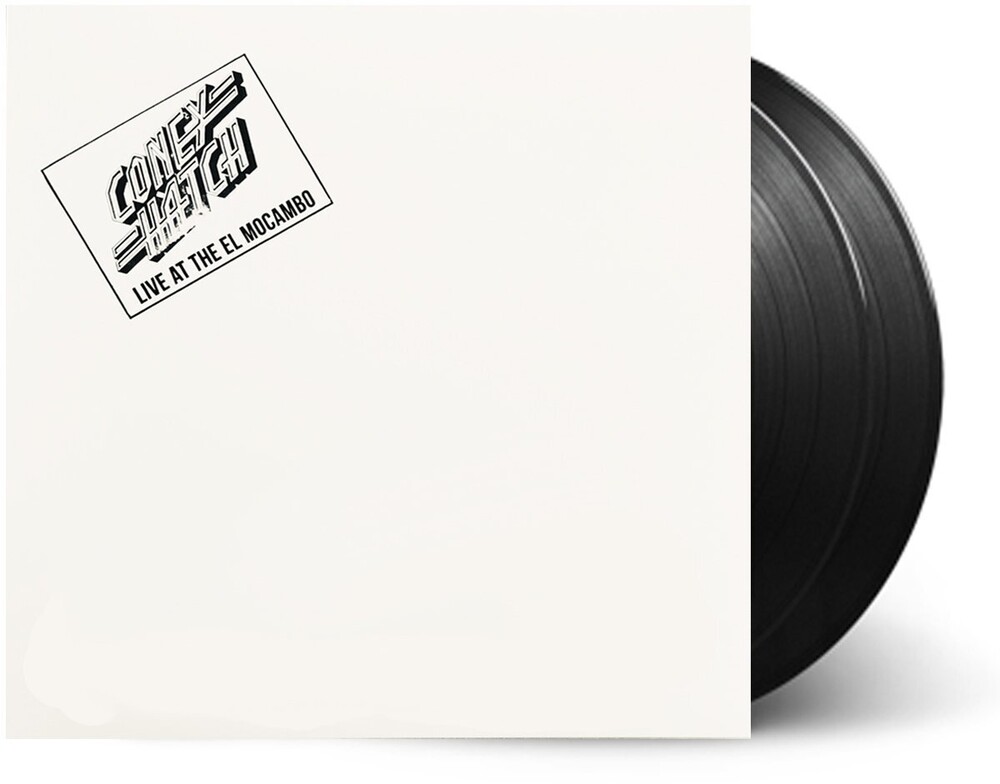
We had done so much touring between 1982 and 1985 with Iron Maiden, and Judas Priest, and the odd show with Ted Nugent, Cheap Trick or Eddie Money. We would be touring all year. We didn’t get to see our families, girlfriends, or our pets. We got to be a well-oiled machine. We did so much touring then, that when we get together now, it’s amazing how little we have to rehearse. For the El Mocambo show, we did two, four-hour rehearsals, and that was it. It was like putting on a pair of old tennis sneakers. It felt really, really good. So what you hear from that El Mocambo show is pretty much what happened. There might have been a few tweaks to get it balanced properly or fixed some bad tunings on some background vocals, but honestly, 95 percent of the show was as is.
What planted the seed a decade ago to put the band back together and try this again?
There was never any nasty falling out when we split up. It was like a happy marriage that went bad but the two partners shook hands stayed friends. There was never any animosity between us. We got a call one night from Carl Dixon’s family. Carl had been in Australia and was working really late at night at a session, got out, was dog-tired, and basically jumped in a drove down the wrong side of the road. If you’ve ever been to Australia you know how disorienting it is to drive there. He had a head-on car collision and was in really bad shape. He shouldn’t be alive. They literally had to put him back together. He was in an induced coma. So we got this call from the family, and they said the doctors were encouraging them to call some of Carl’s friends. They wanted him to hear some familiar voices and wanted to job his brain waves and keep him cognitive. So they handed the phone over and put it on Carl’s ear, and I said to him, “Hey Carl, it’s your buddy, Andy. You’ve got to pull through this, dude. We’ve got a lot more rockin’ and rollin’ to do.” And we hadn’t played in ages, so I don’t know why I said that to him. Maybe to give him sort of a lift. I told him to get better, and we’re going to play some shows. Get your ass back to Canada. When he got out of the coma and eventually flew home, we got together for a small reception at a restaurant. He was in a wheelchair, had an eye patch on due to a broken orbital bone, and couldn’t walk. He looked at me and said, “Andy. Talk to me about those shows.” I was like, “Oh my God, I can’t believe he remembered it.” So we kind of dangled that carrot, and he used it to motivate himself to get through the rehab. That was the beginning of it all.
Your debut album came out in 1982, and it’s a good one. You guys were filled with piss and vinegar and you can hear it. What was that time like for you?
What a rocket ride. I consider myself very lucky because you think about all the friends and musicians you have that keep hammering away, but just don’t get a break. Timing is everything, and we just got some lucky breaks.
What was the first big one?
We had been playing for about a year-and-a-half in clubs in Toronto, dividing our set between original material and cover songs. We actually got the reputation of being a pretty darned good AC/DC band. We played a lot of the songs off their early records like “Sin City” and “Downpayment Blues.” One night, we were playing the infamous Toronto club call the Gas Works. Anybody who is a fan of Mike Meyers and “Wayne’s World” knows he references it. It’s a “real club.” We played there many, many times, often for a week straight. This one night, I could see this guy sitting at the table and it looked like he was giving us a review. I was going to go over after the set and talk to him. I thought he might have been from the Toronto Star. So I introduced myself and asked if he was writing a review on the band. He said no, he was actually writing some lyrics. He introduced himself as Ky Dubois, the lyricist for the Canadian band Max Webster. I knew them, because I’m a big Rush fan, and they were the ones who toured a lot with them. He told me the band he just broken up, but that their guitar player, Kim Mitchell, wanted to get into some production, and he was going to tell him (Mitchell) about our band. And that was it. He took us under his wing and into the studio where we recorded a five-song demo. He shopped it to Capitol Records, played it for Ray Daniels, Rush’s manager, and before we knew it, we had a bidding war going on. It was like a whirlwind. We were literally plucked right out of the bars.
For an 18-year-old, that must have been quite the experience.
We finished that record in a couple of months, and then our manager told us we had a deal on Mercury (Polygram for the rest of the world), and our very first show we played since coming out of the clubs, was opening for Cheap Trick and Ted Nugent at a big stadium in Toronto. And that started the rocket ride. We played for 15,000 people that night, and then were told that we got the Judas Priest “Screaming for Vengeance” for at least a couple of months, if not longer. We literally went from playing for 400-500 people in the clubs to 18,000 in arenas.
And that was at the height of Priest’s success, so things must have really been hopping.
They treated us amazingly. I was 19 years old going, “What the hell just happened?” Lightning struck. To our credit, we had a lot of airplay, and we had been playing relentlessly. We went on to tour with Iron Maiden, Krokus, Accept, Triumph, and even a couple of shows with The Tubes.
That had to have been interesting playing in front of that audience.
(Back then), there was a little less scrutiny. People were more accepting. We seemed to go over fine.
Maiden was at the top of their game, too, so you really had to step it up with your performances.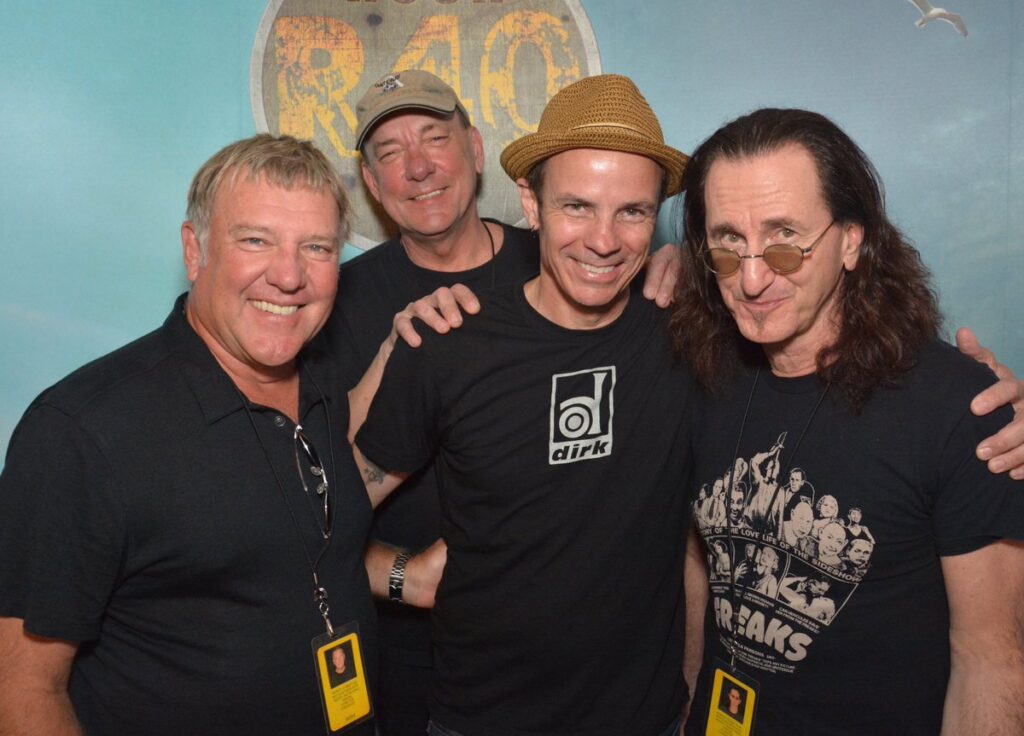
We struck up such an amazing friendship with them. They were a little bit closer to our age group. Steve Harris has become one of my best friends since I first met him in ’83 when he came storming into our dressing room and said, “I understand one of you guys is a tennis player. Which one of you guys wants to play tennis?” And it was me. We played on any days off that we could.
Any particular memories from the shows?
We had heard about all these band playing practical jokes on each other on the last date of tours. So we were trying to think what we could do to the Maiden guys. I don’t know who came up with it, but we thought it would be a good idea to pie the guys while they were playing. So we went into the dressing room, got these huge plates with whipped cream, and then someone decided it would be a great idea to put cat food in them. We were putting them into a little freezer area so that they would be ready. Our tour manager saw us doing it and said, “What the hell are you guys doing?” We told him, and he goes, “No you’re not. That’s suicide. You are not going to do that. You don’t do that to a band like Iron Maiden.” We called him a “fun sucker,” and he said, “No I’m not. I’m saving you a lot of trouble. This is not going to be cool.” So when went onstage that night, he went down to the Iron Maiden guys and told them what we did. They all went into our dressing room, got the pies, and ran out onto the stage and smashed all of us with cat food and whipped cream. We thought it was quite funny.
And how about Priest?
We played with them at the Cow Palace in San Francisco. There were maybe 18,000 or 19,000 just rabid, rabid fans in there. When the lights went out, you could feel the adrenaline with just the roar of the crowd. Back then, it’s not like it is today where you get searched going into the arena and they take all of the stuff away from you. We had kids throwing tennis balls and cutlery and firecrackers that we exploding all around us. Rob Halford had told us that their fans weren’t very accepting of opening bands, but that we just had to do our best to put our heads down and play through to the third song. If we could through the third song, we would be OK. But that particular night, we should have received danger pay. I had four or five M1 firecrackers go off really close to me. (Laughs)
Not things you’d expect to have happen, especially having come from clubs in the not-to-distant past.
You just don’t think about that when you’re in a band. You just think you’re going to be out there playing songs, not dodging cutlery and hockey pucks and tennis balls and firecrackers. It was rude awakening that night.
So did you stack the front half of the set that night with some of your heavier tunes to try to win them over?
Oh, yeah. We learned fast from the early shows that we needed to start dressing in black and changing our setlist. We dropped in “Devil’s Deck” early in the show so people would know who we are. When in Rome, do as the Romans. We did everything in our power just to fit in. We had kids with signs saying they wanted Saxon, giving us the middle finger, telling us to get the “eff” off stage, all that kind of stuff. Usually by the third song, they settled in and said, “Eh, we kind of like these guys.”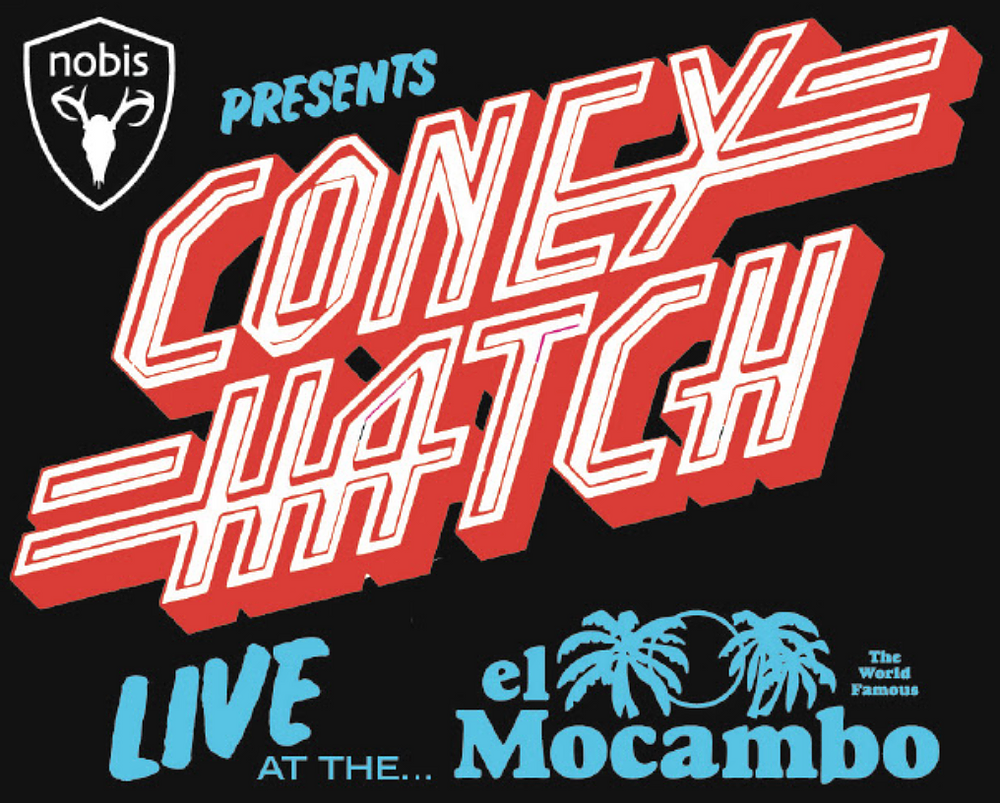
You guys put out two albums, “Out Of Hand” and “Friction” after that, and then the wheels fell off and you parted ways. What happened?
There were a couple of pivotal moments. “Friction” was very aptly titled. There was a lot of friction with band members. We took a lot of foolish advice. On the second record, our label said we needed a new producer. We did really well on the first one, but they needed to get a “name” producer for “Out Of Hand.” I remember thinking that this was really strange. We worked great with Kim Mitchell on the first one, and it wasn’t broke. So why fix it? But they convinced us to do the record with Max Norman, who had done the Ozzy records with Randy Rhoads, a couple of Bad Company records. He had some very good projects under his belt. In retrospect, though, I think that was a big mistake. Our sound started to drift, and we started sounding more polished and commercial. There was a lot of pressure from the label who would say things like, “You’re lead vocalist (Carl) sounds a lot like the guy from Rainbow, or Lou Gramm from Foreigner. You need some radio hits.” We started getting a lot of interference. As the founder of the band, I could feel the sound getting away from what I felt worked for us. Then at the end of the second album, my two bandmates came to me and told me that they thought we needed a new drummer. We had a democracy. All four guys got an equal vote. But the drummer wasn’t going to get a vote, so I got outvoted and the next thing you know, we have a new drummer for the “Friction” record. By that time, we were all fighting like cats and dogs and the sound became even more polished and slick. Subsequently, the family vibe of the band started to fall by the wayside. We weren’t going over that great in front of Krokus and Accept — especially Accept. They were very heavy, and I love that band, but it probably wasn’t a great fit for Coney Hatch at that time. At the end of the tour, Carl gave his notice, and nobody tried to stop him. We had run our course.
Was this the beginning of the end for you guys?
We were touring through Texas and were told that one of our label reps was going to come take us out for dinner. We were all like, “Awesome. We can run up a huge bill, get drunk and have some fun.” Anyway, that particular night, John Cougar Mellencamp’s brother, Ted Mellencamp, took us out to dinner. We were thrilled to meet, talk about John, and hear some war stories. We were just finishing up dinner, and he looks at us and goes, “You know, it’s a real shame what’s happened with your band here. I’m so sorry that you guys have been dropped from the label.”
Oh man.
Nobody had told us. All four of us, our faces were white as ghosts. He was like, “Did nobody tell you?” So that’s how we learned we had been dropped. We were still signed in Canada, but a big part of the allure was having global distribution and being able to tour all over the place. Being dropped by Polygram was just another nail in the coffin.
The music landscape has changed so much since then. I’m sure you still pay attention to the “scene,” but was Gene Simmons right when he said “rock is dead”?
I don’t think so. I almost have to answer that personally. They say that the bands that you grow up with are the ones that you bring with you for the rest of your life. When I was growing up in my teens, I listened to Aerosmith, Cheap Trick, Ted Nugent and UFO. And I still love those bands. I don’t care if those guys are in their 60s or 70s. I’m a diehard rock fan, and I know a lot of people my age feel the same. There are a lot of people that are now realizing that Coney Hatch was a backdrop for them growing up. People are still excited about the fact that we’re still making records. I have two young daughters in their early 20s who have grown up with everything from rap to hip-hop to EDM. I put on a Steve Miller record or some old Rolling Stones, and try to educate them that, yes, it’s not Justin Bieber or Drake, but this is some really good music. And those bands have resonated with them. So I don’t think rock is dead. I just think, as the Spinal Tap guys said, “It’s a little more selective.” They’re out there, you just have to look for the good stuff and you’ll find it.
A fellow Canadian, Brian Vollmer, the vocalist for Helix, is putting together a book on playing Canada’s bar and club scene back in the 70s and 80 when it was booming. Would you consider sitting down and writing a book or something like that about your career?
It’s funny that you say that. Before the pandemic, we did a handful of shows and finally got around to doing a double bill with Helix, which was great. We’ve known those guys forever, but had never played with them. I follow Vollmer on social media and could see some of the pictures has was posting about Helix and the early days. The scene was so robust. There were at least a dozen gigs available in Toronto, alone, that you could play every time you came through. We had a big following in Quebec. When we first started, we were playing Monday though Saturday, but the more popular we got, it would be Thursday through Saturday, and then the more popular we got, it would be one night only. Helix were on the exact same ride. We’d run into them and Anvil, Sheriff, Brighton Rock, Killer Dwarfs and other bands who all cut their teeth on the club circuit. Brian Vollmer should be the prime minister of Canada, he’s played so many gigs.
So right now, social media is where it’s at for you.
It interests me as a spectator, but not so much doing it myself. One of my daughters just graduated in communications and started a little business where she helps real estate agents and local shop owners run their social media. They just don’t have the time or interest in it. So she said to me, “Dad, why don’t I help you?” So she’s got me all organized, finding old photos for Flashback Fridays, and things like that. It’s been a nice vehicle and platform to talk about the Coney Hatch releases, but also to make people aware of some of my solo records at www.andycurran.com. I’m having fun, but thank God she’s there to help me, because there aren’t enough hours in the day.
Final question, Andy: What does the future look like for Coney Hatch?
We have a couple of shows we will be playing in Germany and Belgium, and ironically some shows with Kim Mitchell that have been rescheduled as well in 2022. In addition to having recorded that show in Germany, we also had recorded a couple of extra tracks for Coney Hatch 4. They were just bed tracks with bass and drums that we never got around to putting vocals or guitar on. But we finished those off, and our hopes are to maybe release the Live In Germany with two new studio tracks. We’ve been talking to a couple of labels who seem to be interested in it, so I think, for the short-term, you’ll see a couple of quick releases from Coney Hatch.

